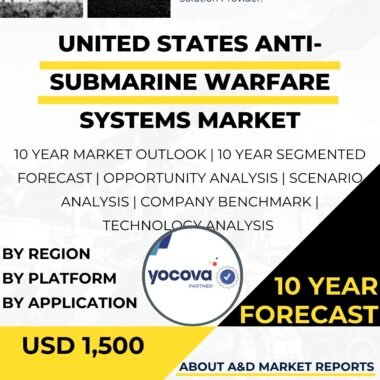Description
The South Korea ship radar market is a crucial segment of the country’s maritime and defense industries, providing advanced radar systems that enhance the safety, navigation, and surveillance capabilities of ships operating in various maritime environments. Ship radars are essential tools for detecting obstacles, other vessels, and potential threats, enabling safe navigation, collision avoidance, and effective surveillance at sea. South Korea’s focus on indigenous development, strategic partnerships, and technological innovation has positioned it as a major player in the global ship radar market.
Maritime safety and navigation are of utmost importance to South Korea, given its extensive coastline, bustling ports, and active maritime trade. Ship radars play a pivotal role in ensuring the safe passage of vessels through busy shipping lanes and challenging maritime conditions, contributing to the efficient and secure movement of goods and people.
Indigenous development has been a cornerstone of South Korea’s approach to ship radar technology. The country’s defense industry, represented by companies like LIG Nex1 and Hanwha Systems, has made significant strides in developing advanced ship radar systems tailored to meet the specific requirements of the South Korean Navy and civilian maritime operators.
The South Korean Navy relies heavily on ship radars for maritime surveillance, early warning, and defense against potential threats. These radars provide essential situational awareness, allowing naval vessels to monitor maritime traffic, detect potential hostile actions, and respond to emerging security challenges.
Beyond defense applications, ship radars are critical for various civilian maritime sectors in South Korea. The country’s shipping industry relies on radar systems to navigate congested waterways, monitor marine traffic, and ensure the safe passage of cargo vessels and passenger ships. Fishing vessels also benefit from ship radars, as they assist in locating fish shoals and navigating through adverse weather conditions.
South Korea’s commitment to innovation and research and development (R&D) has driven advancements in ship radar technology. The country invests in R&D programs to improve radar resolution, target identification capabilities, and the integration of advanced sensors, such as automatic identification systems (AIS) and weather radars, to enhance maritime surveillance and safety.
As part of its broader defense and maritime industries, South Korea’s ship radar market extends beyond domestic needs. The country actively exports ship radars and related technologies to other nations, generating revenue and expanding its influence in the global market. Successful exports demonstrate the reliability and performance of South Korean-made ship radars, contributing to the growth of its defense industry.
Strategic partnerships with international radar manufacturers also contribute to South Korea’s ship radar capabilities. Collaborations enable technology transfer, joint ventures, and the integration of foreign radar systems into South Korea’s indigenous ship platforms, enhancing the overall performance and versatility of the country’s naval and commercial fleets.
To ensure optimal utilization and proficiency in operating ship radars, South Korea places significant emphasis on training and skill development for its naval and maritime personnel. Training programs focus on familiarizing operators with radar operation, maintenance, and effective utilization in various maritime scenarios.
Moreover, safety is a paramount consideration in the ship radar market, given the crucial role of ship radars in collision avoidance and maritime surveillance. South Korea adheres to stringent safety regulations and maintenance standards to ensure the reliability and performance of ship radar systems, minimizing the risk of accidents at sea.
In conclusion, the South Korea ship radar market is a critical aspect of the country’s maritime and defense capabilities. Indigenous development, strategic partnerships, and innovation have allowed South Korea to create advanced ship radar systems that meet the specific needs of its naval and commercial fleets. From enhancing maritime safety and navigation to providing crucial surveillance capabilities, ship radars play a pivotal role in South Korea’s maritime operations and contribute to the efficiency and security of its maritime trade. As the maritime and defense industries continue to evolve, South Korea’s dedication to advancing its ship radar technology will remain essential in maintaining its position as a major player in the global ship radar market.




